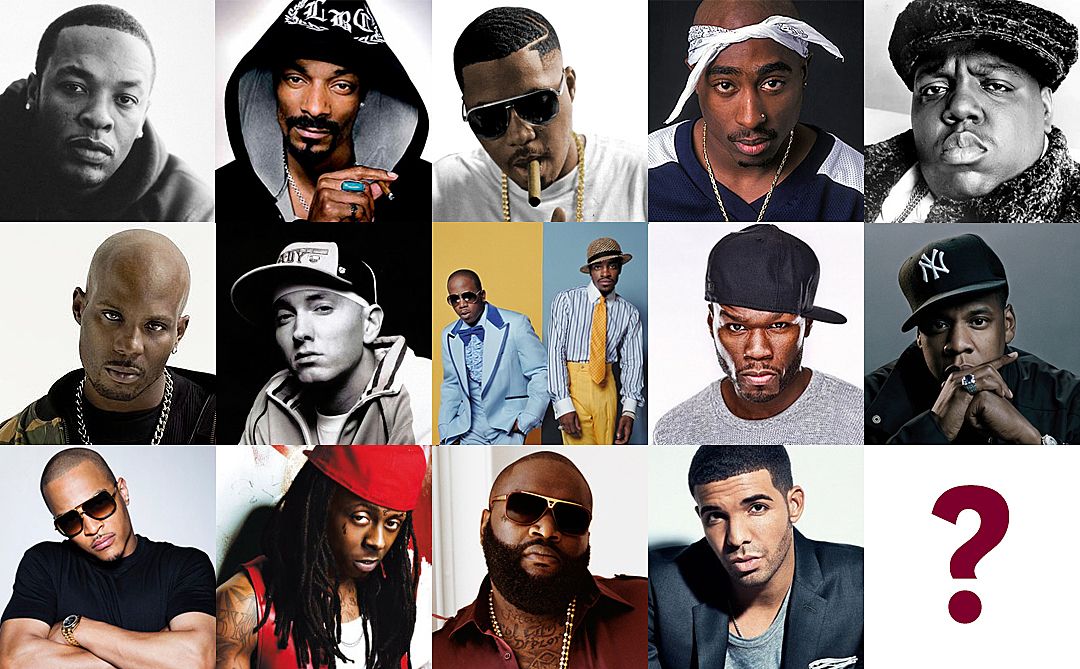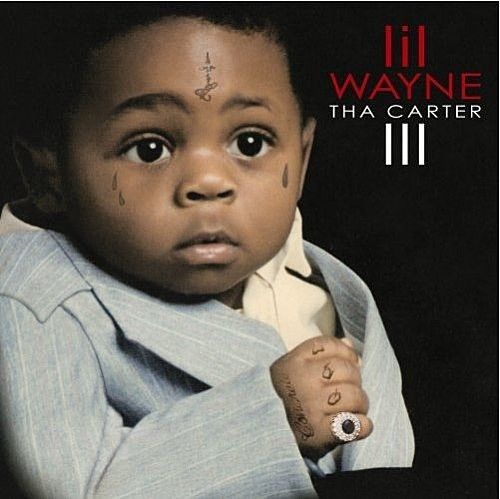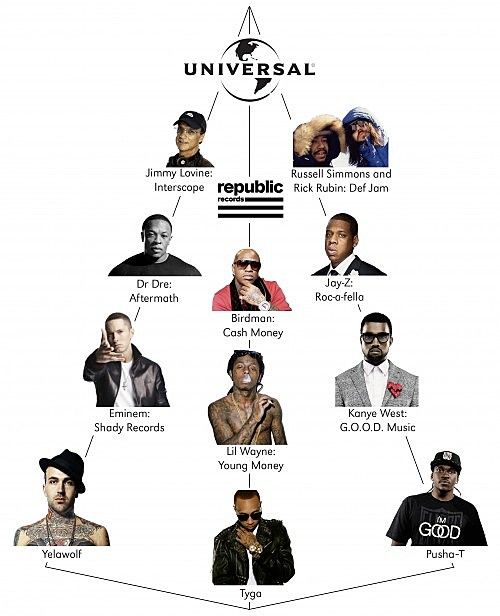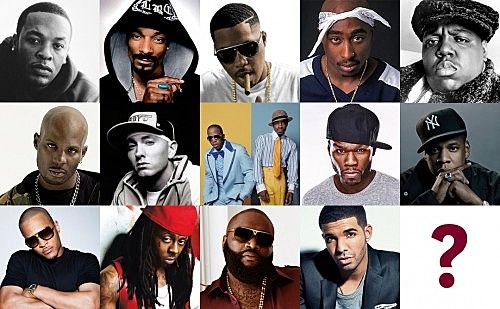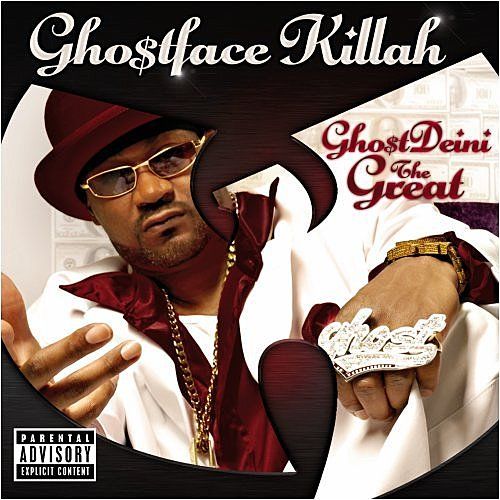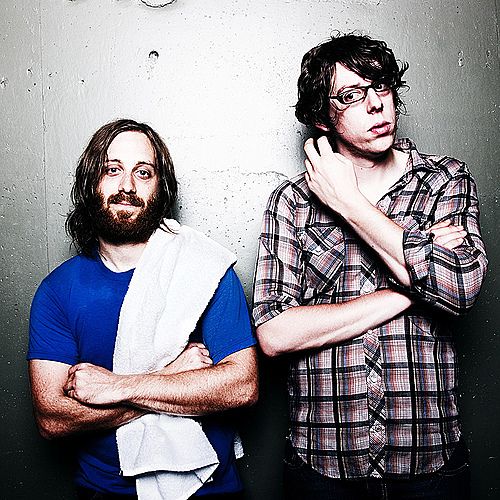The Harder They Come: Ridin’ the Boom-Bust Economy of Rap
Duncan Greive looks at the dizzying heights and precipitous falls of the hip-hop world - why rappers flame out brilliantly while rock bands keep churning on to much acclaim, and why it's better this way.
Five years ago, Lil Wayne released The Carter III – at the time, his crowning achievement. The culmination of a decade-long ascent from the streets of New Orleans to pop stardom, it sold over a million copies in its first week. Around the same time, his frequent pronouncement that he was “the best rapper alive” ceased to be a boast and instead became a clear statement of fact. His slow, lusty single ‘Lollipop’ played the whole US summer, the first of two chart toppers for producer Jim Jonsin, who also helmed T.I.’s smash ‘Whatever You Like’. The pair had the world at their feet – in any other genre a long slow burn at the top would have been assured on the back of their initial success.
Unfortunately for them, great hip hop is a terminator crop, hardwiring the seeds of its creative destruction into its DNA.
In 2013, Wayne is a long way from his glorious peak, having released a much-ridiculed ‘rock’ album and string of patchy albums, sequels and mixtapes. Lately he’s been making the news chiefly for his ongoing seizures and a six-day hospital stay. He has a current hit single which feels like a charity record, thanks to the heavy lifting being done by Atlanta singer/rapper Future and his former protégé Drake – just two of the dozens of rappers who have eclipsed Wayne over the past few years. The one-time infallible producer Jonsin, meanwhile, hasn’t had a Billboard top ten hit since 2010. Each now looks washed up.
They are hardly unique in having soared then fallen. Most of the biggest rappers of the past decade are shadows of their former selves, with nothing like the cultural cachet they once possessed. Rehab (Eminem), indefinite hiatus (Outkast), jail (T.I.), or borderline insanity (DMX) beckoned them from their perch. I would argue, though, that it wasn’t just a run of bad luck. It was an inability to cope with the moment having passed, and how fleeting it always is in hip hop.
There’s a brutal, unforgiving meritocracy to rap which makes it unique amongst popular musical forms – there is only the climb up, and the fall down. Nobody gets to stay at the top for too long. And once you’re done, mostly, you stay done. You skulk around the edges of the form, either retreating to a core fanbase or debasing yourself with ever-more-vain attempts at a comeback. Artists who have been in that slot and still rap always look slightly broken by the experience – witness 50 Cent’s seething, embittered rage, or the persistent mark-missing of Eminem and Snoop. Maybe that’s why Dre refuses to release Detox – an album he’s been working on for 13 years. If you’re only as good as your last album, then why not make it 2001?
Similarly, it’s tough to think of a form which cares less for its icons than hip hop. The fetishism for pioneers displayed by almost all other genres just doesn’t really exist. No contemporary hip hop star is reaching out to 80s or 90s icons to revive their career the way Jamie xx or Damon Albarn do. That might be because they genuinely aren’t influenced by them. Hip hop’s musical memory – the frequency with which its most popular current artists betray the influence of those who went before them – is shrinking all the time. Just as likely it’s that the cultural capital in the act itself is virtually non-existent. The last time it happened at any scale, Kanye West wasted a whole album’s worth of beats on a clapped-out Common – a gesture so pointless as to serve as a cautionary tale for years to come.
On some level, you can understand that. Go and listen to Boogie Down Productions, Run DMC or Public Enemy now. Same with De La Soul or A Tribe Called Quest. There’s little of their style and force in contemporary hip hop – outside of hermetically sealed niches, anyway. Even the group aesthetic is mostly done, replaced by the individual era which started proper with Nas and Jay-Z – an implicitly more capitalist, star-based mode of ascent. Some recent attempts to buck that haven’t gone well – Tyler, The Creator (Odd Future), A$AP Rocky (A$AP Mob) and Kendrick Lamar (Black Hippy) are now all far more famous than their collectives.
Some might feel like that’s a flaw in modern rap, that it lacks the camaraderie, values and virtues of its original eras. They’re wrong. Every-man-for-himself is actually the feature which has made it the most dominant modern musical genre of the last 30 years. The lack of self-conscious homage to the past is what distinguishes from all other forms. Most mainstream hip hop artists don’t want to venerate the past, they want obliterate it.
[caption id="attachment_6489" align="aligncenter" width="500"] Queensbridge Houses - the birthplace of Nas, Cormega, Havoc and doubtess more to come should they hustle enough.[/caption]
When you’re starting out in rap, anywhere in America, two immutable truths stare back at you. Firstly, a successful rapper has probably come from your neighbourhood or somewhere close by. Secondly, hundreds of unsuccessful rappers have done the same. Lately, to make the leap there’s a particular path which most [1] successful rappers follow, a system of guest verses and mixtapes which functions like a video game – it’s a bit harder to get through each stage, and the numbers who progress get smaller each time. Get far enough, and a national or regional star might notice, and give you a verse on a mixtape or, better yet, a single.
Over the past few years, rather than make that act a selfless one, a growing system of patronage has arisen. You get a prime-time slot only after inking a deal to that star’s vanity label. They are thus incentivised to help promote your career – and have a piece of your talent should you defy the odds and really break out. It’s like a pyramid scheme, in a way. Take Brinx Billions, who appeared on Nicki Minaj’s most recent album. He’s signed to her label; she is signed to Young Money, Lil Wayne’s label, which is in turn an imprint of Cash Money, Birdman’s label. Cash Money operates as a subsidiary of Republic, itself an imprint of Universal – the biggest record label on the planet. That looks more like venture capitalism as practised in Silicon Valley – follow Kleiner Perkins' investments on down – than anything else in the music industry.
What’s interesting – and different – about hip hop’s system, is the incentives it offers. Nicki has every incentive to bring Brinx Billion’s career along – if he gets rich, so does she. But the process of bringing him up – reflecting some of the light that Wayne reflected to her down onto him – brings with it some dangers. Chiefly, that Billions will outshine her. That might seem unlikely – I’m not predicting it – but look at every artist on that chain. Birdman brought Wayne up, only to be eclipsed by him. Then Wayne did the same to Minaj, only to have the same trick pulled. It’s a curious system, but one which explains why hip hop, more than any other popular musical form, has been so creatively interesting over such a long period of time.
[caption id="attachment_6487" align="aligncenter" width="500"] A way of understanding the state of play - Universal splits into its big subsidiaries, then sizeable labels curated by rap elders, then smaller boutique labels that float the next up-and-comers. Universal's is probably the easiest to depict, though all big labels could show a similar if more convoluted model.[/caption]
It works because it encourages naked, unfettered competition, in both an athletic and business sense. There’s no musical genre which cares so much about sports – “Take your pick / Jackson / Tyson / Jordan / game six” – or which attempts to, insofar as its possible, replicate what’s so endlessly exciting about that world's unscripted drama. Let’s face it – hanging around forever is good for the artist, generally less so for the fan, and inconceivable on the track, field or court. A 8-10 year career with a 2-4 year peak – like most pro sports – keeps things in perpetual, unpredictable motion.
The obsession with empire – clothing labels, endorsements, energy drinks – similarly betrays the competitiveness at its core. Just winning at rap isn’t enough – business is fair game, too. Often combined with sports. Jay-Z – maybe the only good example of rapper who has had true multiple peaks – just had to divest his (tiny, but still) shareholding in the NBA’s Brooklyn Nets so he could open a sports management house. 50 Cent earned nine figures for his stake in Vitamin Water’s parent Glaceau upon its sale to Coke, and is building a boxing promotion company from the ground up. The attraction makes sense. In sports, as in business, we know who’s the best or biggest at any given time. Or, at the very least, we can debate it. Same with rap. Name any year in its history and I can tell you who was the best doing it at the time. 93? Snoop Dogg. 98? DMX. 2001? Eminem.[2]
That doesn’t mean they had the most impressive verse, were the best lyricist or had the coolest flow. It means owning the moment, having a single which transcended the genre, an album that no one can stop playing. To me, the quintessential example of this was when 50 Cent’s ‘In Da Club’ came out in early 2003. It was so effortlessly charismatic that 50 instantly became the biggest noise in rap. That moment is what hip hop fans live for – the arrival of a superstar, fully-formed and ready to play. SBW at the Bulldogs in 2004 had a near-identical feeling.
The most emphatic evidence of hip hop’s competitive cultural environment is the fact that its biggest-selling albums are, by and large, also amongst its greatest artistic triumphs. Aside from three spectacularly successful novelty albums, every artist in the top twenty all-time list had a profound impact on the genre’s trajectory at the time of release. If you look at pop music as a whole, that’s far from the case. While Thriller tops the list, it’s closely followed by The Eagles, Shania Twain and The Bodyguard soundtrack.
So while hip hop’s materialistic obsession with money and sales – “last album did two/ I’m just tryna do three” – is an oft-cited criticism, it’s really just a method of keeping score. In this music, as opposed to all others, sales and financial success are the most accurate predictor of artistic potency. Not the only one, for sure. But easily the most useful.
Hip hop really cares about ‘the best’. It believes the subject to be near empirically provable at any given point in time, and if you believe you should be in the conversation you’ll make your case over and over again. While that’s also one of the tired arguments posed against its artistic worth – ‘bragging’, bluh – that’s really just a manifestation of that competitive spirit. It’s the equivalent of Jobs’ presentation unveiling the iPhone, or Lebron’s work during the Heat’s streak. Most of the time, the person making the claim isn’t worthy of it, but the process of assembling it – that is, finding an artful way to express your talent and dismiss another’s – at least indicates that you want to be considered for the title in the future.
I would argue that most people in and around hip hop would – perhaps grudgingly – admit to knowing who ‘the best’ is at any given moment. That doesn’t mean they have to be your favourite artist – but that their will, style and skill has combined to make them the defining sound of the era. At any point in time, there can be only one. Since 2000, I would list the following, in chronological order: Eminem; Jay-Z; 50 Cent; T.I.; Kanye West; Lil Wayne; Rick Ross; Drake. Sometimes those guys went back and forth, ebbed and flowed a little. But for the most part, for most people, it was one of them. By the end of this year maybe Kendrick Lamar takes it, or anyone else on Fuckin’ Problems, for that matter. But you get the point: all have had multiple number one albums, changed the game (then, mostly, started to slide) and it’s something you can have a realistic conversation about. Try doing the same thing with indie music, or mainstream rock, or pop, or dance music, or even R&B. It’s simply impossible – the biggest is occasionally the best, but not often enough for it to be worth listing as a key parameter. And its absence as a measuring stick means you’re forced to use far less reliable ones, like sellout tours, critical unanimity or ‘influence’.
Same goes for the sound of rap at any given time. For the most part the best producers are defining it, and that style is the bed of the biggest hits. Go through that list above and you immediately think of some of the producers who defined their peak – Dr Dre; Kanye West; Dr Dre again; DJ Toomp; Kanye West again; Jim Jonsin; J.U.S.T.I.C.E. League; Noah ‘40’ Shebib. With Mike Will Made It coming now. All had signature styles which moved the sound forward – and then were (mostly) eclipsed by a younger, hungrier example.
What’s great about there being a ‘best’ and everyone knowing who that is, it means that anyone who isn’t that, desperately wants to be [3]. The best, having clawed their way to the top, is now simply the biggest target. In studios across America rappers and producers are trying to take that spot. It defines the culture, leads to all of its most worthwhile sonic innovation and, strikingly, is almost entirely absent in other genres, aside from chart pop, which does it a bit, but in much more organised and orderly way.
Look at everything else: there are one-time stars who get to tour big venues and release albums despite years of mediocrity (in rock: Bon Jovi); legacy artists who everyone wills to be great again, and sometimes get help from fresh young talent (in R&B: Mary J Blige); truly horrible artists that just hang around forever (in pop: Christina Aguilera). That happens, I believe, because there’s a far stronger cultural memory in those genres. Having had a proper hit album there matters so much more, and means you get a bunch of chances to come back. Eventually, that becomes self-reinforcing. You get the best writers or producers, the biggest marketing budgets – boom, there’s another hit, or something like one. In hip hop that happens too, but to a far lesser extent. The heat around an artist is so much more predicated on your last song, your last record, than anything deeper into your CV.
Look at Mike Jones. For a half minute in the mid-’00s he defined the Houston sound, a few years later he was playing auto shows. Or the Ying Yang Twins’ strip club rap – their label TVT’s fluoro green 12” sleeves went from hit machine to bankrupt within three years. Each sold vast numbers, then had follow ups which barely registered.
[caption id="attachment_6490" align="aligncenter" width="500"] Ghostface Killa's 2009 best-of was pilloried as a "an almost arbitrary-looking and thrown-together mixture of rarities and hits from a man with no shortage of either". To be fair, he was on new ground, even for an established rapper.[/caption]
You can see this disregard for the past most starkly in reissues and greatest hits. For a long time I thought the lack of deluxe reissues [4] and carefully tended singles packages was just more evidence of incipient music industry racism – can you imagine a well-regarded heritage artist like Ghostface Killah receiving such a tawdry package as Ghostdeini The Great (actually one of the better rap best ofs, shockingly) at the height of their fame in any other genre? But it’s not racism – it’s just economics, like everything else in the business. When an album or artist is done, for the most part they stay done.
Hip hop’s churn reflects its values system, and means that artists have a really short window in which to make their money. One or two albums, a few tours – then mostly you’re done being properly famous. Not all the time – but for every Big Boi, there’s a lot more Lil Flips, Lil Scrappys and Lil Jons. And the ceaseless motion of the sound means your ability to parlay success into a long-term income stream is similarly diminished. Older rock and pop sounds might come back into fashion. Reissues might revive interest in an era. Popular magazines and websites might be dedicated to endless rehashings of your origin story. But there’s little demand to sync old rap songs, or an old-timers touring circuit for you to retire to. Even the throwbacks played on the equivalents of Mai FM and Flava around the world are likely to lean more toward artists that hung around a while.
It’s cruel, but it’s reality.
And ultimately, it’s healthy – for the genre’s vitality, if not the artists concerned. In sports, you might keep a once-great player on the bench for a spell, to raise a young team’s culture. In capitalism, you might put up with one or two bad products. But soon enough, you move on. Nokia, anyone? Or Jerry Collins? It’s a harsh truth – but most careers only have a relatively small period of truly high level potency. Hip hop makes you redundant with four weeks pay.
Rock music, though, gives you a fat pension. You see an inordinate tolerance for mediocrity in what was once a radical form. The same bands, once they truly ascend, lock down magazine covers and big venues for years to come. Red Hot Chili Peppers, U2, Foo Fighters, Coldplay, Kings of Leon – watch The Black Keys go – this stuff just hangs around, regardless of whether the current model has anything of value to offer.
[caption id="attachment_6492" align="aligncenter" width="500"] Want to punch these faces now? Wait 'til it's 2033 and they cover half the Earth's surface.[/caption]
It wasn’t always like this for rock music. Through the ‘60s there was a similar climate of innovation, of bands flowering and then falling. But in the early ‘70s the band-as-brand became a dominant idea – think Pink Floyd and the Rolling Stones – and with it lengthy careers which for the most part eschewed new sound and genuine creative risk. The audience generally went along with it, barring brief flowerings like punk and its offspring, which for all the ideas and noise, would have cumulatively sold less than Dark Side of the Moon.
The whole values system of rock music through the ‘80s and ‘90s reinforced this idea of a few mythically talented men putting out grand artistic statements. It was film’s auteur theory misapplied to the charts. Magazines like Rolling Stone and Mojo became avid champions of the idea, and in the process implicitly allied themselves against youth, innovation and risk. Documentaries were made by grand old men about other grand old men – boomers re-telling their youthful fables, free love and all that. The effect was to drive those interested in genuine progression to the fringes, with correspondingly lower expectations. Hence indie rock’s current dominance of the ‘experimental’ within rock-based genres. Because hits are a dirty word within that world, everyone acts like being both the best and the biggest band in the world is impossible [5].
By now, the divergence might be so inculcated as to make that true. When a band has the temerity to be big and bring new ideas – I would argue Fall Out Boy did exactly that on Folie a Deux – they get it in the neck from both sides. Their fans hate them for changing, and critics loathe them for having been popular in the first place. Radiohead might look like an exception to this, but they’re really just a continuation of the 70s rules – and haven’t had a hit single in over a decade. And to those who suggest that hip hop’s relative youth is the cause of its creative freshness – it’s not. Rap is roughly the same age rock was in ‘93. Nevermind – probably the last time 'biggest and best' was true in rock – was then two years old. And even that came after a lost decade for mainstream rock.
Hip hop, in its mid-thirties, remains immune to those deadening instincts. It doesn’t allow artists to stick around and get bloated. Instead it fosters a culture of ceaseless competition, from street corner battling to my-deal’s-bigger-than-yours dick-measuring. Everyone is concerned with empire, but in so doing you just bring more potential challengers into the light. Drake might have started from the bottom, now he’s here dominating. But you can bet he won’t be for long.
[1] Most, not all. But for every Trinidad James – who had an unassisted hit single within a year of starting rapping – or Odd Future, there’s a dozen more conventional narratives. [Back]
[2] Smarter rap brains than I might disagree with me – particularly on DMX – but most people paying attention can whittle it down to the same few in any given era. [Back]
[3] Right the way through here, I’m ignoring both backpack/underground hip hop and pop artists who happen to rap like Will Smith and Flo-rida – the same way 95% of rap fans do. [Back]
[4] The only major exception to this is Nas’ Illmatic – aka ‘the rap album that appears on rock magazines' best of lists’. As a result, it gets a ludicrously overwrought reissue. That’s not because it’s a great rap album – which it undeniably is – but because, weirdly, it’s become a ‘great rock album’. The label releasing the Illmatic package does a bunch of other stuff which will play well with mid-thirties sneakerhound ‘golden age’ rap fans, but mean precious little to anyone else. As Noz points out, the whole notion of an untouchable classic isn’t that functional or helpful for rap. [Back]
[5] Ironically, rappers with their eyes on the future are now picking the eyes out of the fresh sounds coming out of that era and making hits with them. [Back]
